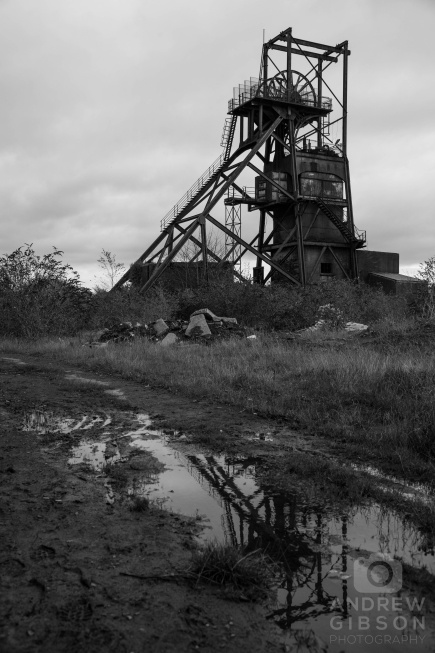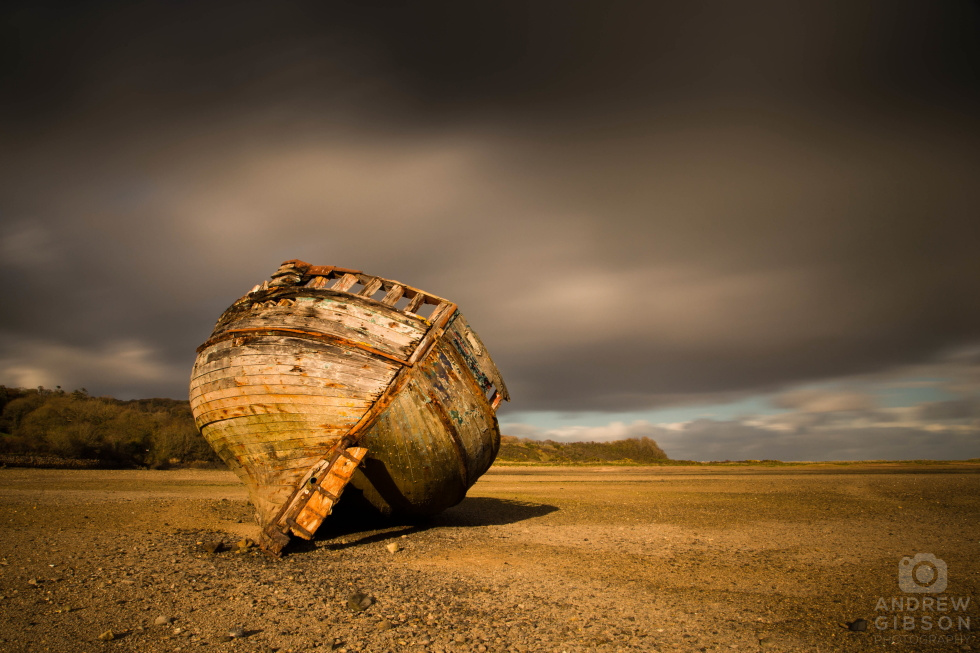It’s been a long time since I spent any time in this particular part of the UK, so the annual November getaway seemed like a good opportunity to reacquaint myself with the land of the daffodils. Not that there were any of those to be seen at this time of year. There were plenty of other things to see though: A few scenics to be shot and day after day wandering in the expansive forgotten ruins of an abandoned post-apocalyptic wasteland. Or as they call it round here, Wales…
I mean that kindly of course. Wales offers up a plethora of disused mines and quarries, hospitals, churches and industry almost like no other part of the UK – absolutely the environment I enjoy being in, but we’ll come back to that: there were more traditionally scenic things I wanted to see while the sun shone.
Commemorating the Great War, Cummins and Piper’s Weeping Window installation had arrived at Caernarfon Castle, a river of crimson tumbling from the ramparts on to the ground below. We were a day early for Armistice Day itself but it was timely enough and gave me cause to reflect on what had happened a century ago. Unlike at the Tower of London two years ago I was blessed with blue skies on this occasion and despite the deep shadows managed a passable shot of this transitory piece.

The bright blue backdrop didn’t last though as we left Caernarfon and raced storm clouds across Anglesey in search of the trawler wrecks of Dulas Bay, but the light was exceptionally kind and offered up golden sunlight to contrast against the dramatic leaden skies – far more suitable for the subject matter. Wandering out in to the estuary you can’t help but feel utterly exposed to whatever nature throws at you – be that a fast rising tide or a sudden downpour. Unfamiliar with the terrain I didn’t really know which way it was going to go, but the ground was firm underfoot as the mysterious hulks of a couple of vessels drew closer. What happened to leave them beached in this way? We can only speculate, but they piqued my curiosity as we photographed the shit out of them and rushed back to the car before we became as stranded as the boats were.
Back in Caernarfon I remembered that there are a few things Wales does very well, and one of those things is castles. The coastline is absolutely littered with them, so what better subject for dusk than a shot of one lit up? Blighted by choppy waters that blurred the many boats in the harbour and struggling to balance the ambient and artificial lights, I can’t say I was overly happy with the exercise on this occasion so we retreated for a welcoming beer at the Black Boy Inn instead. Just a half – I was driving, though my photographer friend Dave made the most of the occasion and sampled virtually all the tasty looking ales the hostelry had to offer. Nevermind, I had plenty back at base for later.
The only vaguely usable shot was taken away from the harbour itself, Eagle Tower prominent in the foreground with the rest illuminated in Armistice red behind. It’s not bad, but don’t expect to see it hanging in a gallery or in the online store any time soon.
A second disastrous attempt at this exercise came the following evening after driving out to Conwy Castle only to find the scene ruined by scaffolding all over the adjacent bridge, and giving up all hope we concentrated on seeking out the abandoned world instead. The days that followed threw up a plethora of sites stuck in the past, being subsumed by nature or silently falling to ruin, but it was the prospect of good solid colliery ephemera that excited me the most…
Regular followers may recall a fruitless and saddening journey around Durham and Northumberland that revealed how the region’s mining heritage had been all but wiped from the face of the earth, so it was good to hear of plenty of headgear remaining in the South Wales countryside and we decided to pop down to see some of it for ourselves. The problem with the plan was that one does not simply ‘pop down’ to see anything in Wales: we faced the prospect of a seven hour round trip with every danger that we’d arrive to find them gone…
Not so. I don’t think I’ve been so elated to see something on the horizon since the halcyon days of chilling out in the sunshine at Thorpe Marsh Power Station (RIP). Wales may have historically done castles exquisitely well but more recently the valleys were both dominated and defined by coal, and colliery architecture epitomised this part of the UK. Whether through lethargy, listing or lack of opportunity it was a delight to see that the valleys still have something to show for their heritage, but there is a heavy sadness hanging over the remains – these were functional places designed to be productive, and in their elegiacal state you realise that the wheels will never turn, the noise will never return, the coal will never be mined here again. The parallel I’d draw with the north-east is that the pit villages seemed lost, sterile in a way, and while more headframes remain, in a way nothing has filled the gaping chasm left behind when the last miners hung up their lamps, resigned to a life above ground.

I’d forgotten what an easy place Wales was – unless you’re trying to drive somewhere of course. The people are easy, proud of their heritage, proud of their achievements, stoic in the face of adversity.
And bringing us full circle we came back to the Great War with Remembrance Sunday itself, parades lining the streets of these villages and doubtless across the country. Eager to talk to the apparent strangers in the room, we were approached by a larger than life gentleman in a country pub wearing his own and his father’s medals, who in spite of me already displaying the customary paper poppy managed to sell me two Welsh poppy pin badges at three quid a throw with little effort or thought for what I might need them for. I guess it’s a small price to pay really for what they did for us.


